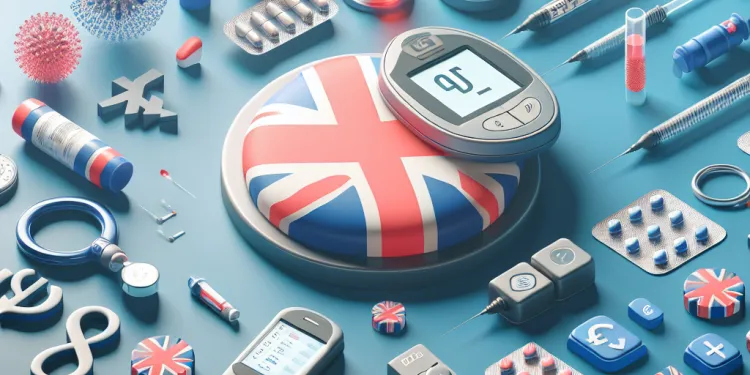
Find Help
More Items From Ergsy search
-
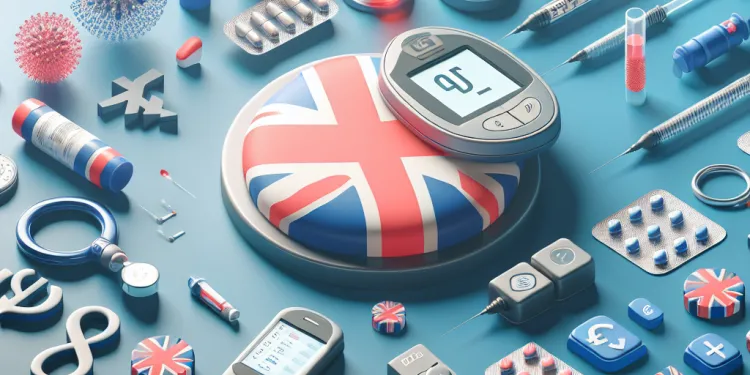
What role does GLP-1 play in diabetes management?
Relevance: 100%
-
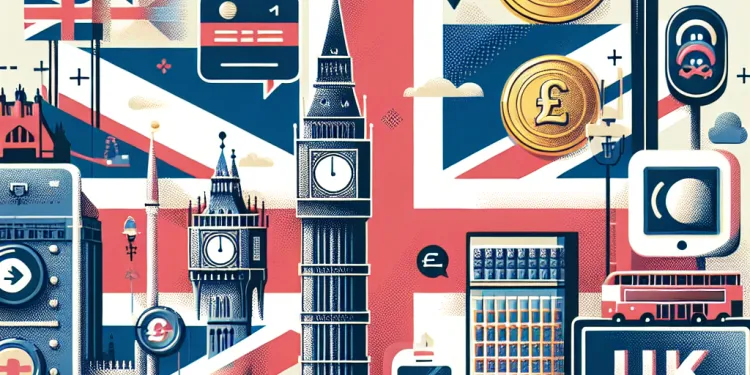
What is GLP-1?
Relevance: 75%
-

Is GLP-1 naturally occurring?
Relevance: 72%
-
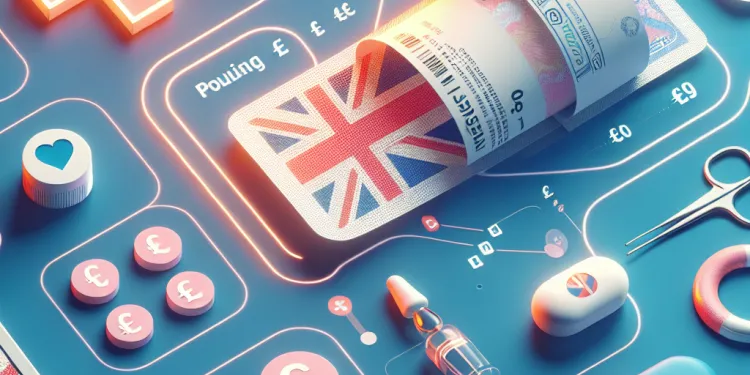
Can GLP-1 be used as a medication?
Relevance: 70%
-

What is the half-life of GLP-1?
Relevance: 69%
-
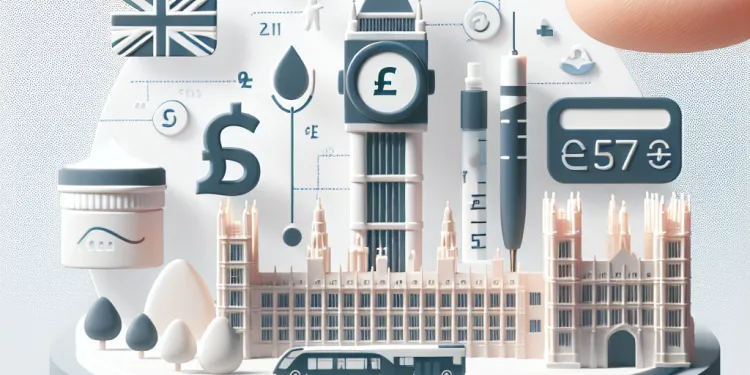
Is Wegovy used for type 2 diabetes management?
Relevance: 69%
-

Can GLP-1 levels be measured?
Relevance: 68%
-
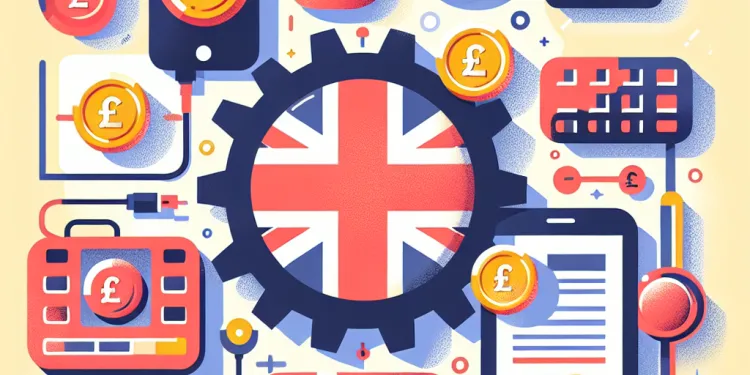
What does GLP-1 stand for?
Relevance: 68%
-

What is the connection between GLP-1 and insulin?
Relevance: 68%
-
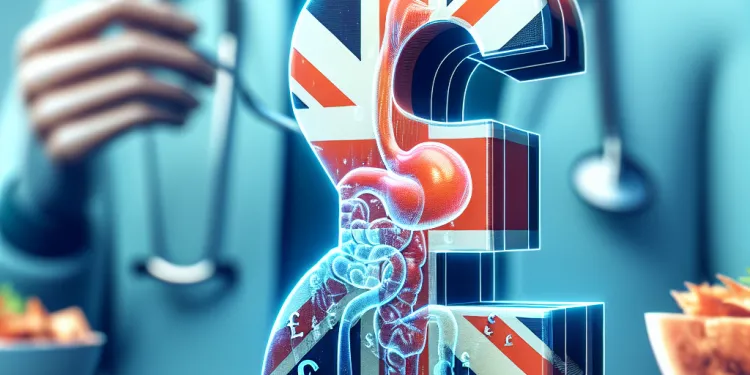
How does GLP-1 affect appetite?
Relevance: 67%
-
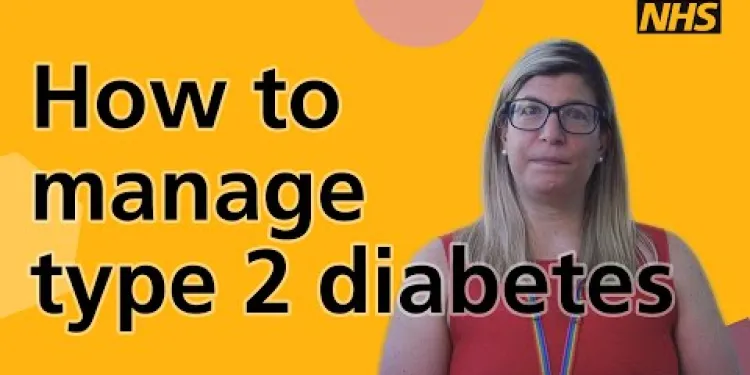
How to manage type 2 diabetes
Relevance: 67%
-

How do GLP-1 receptor agonists work?
Relevance: 66%
-
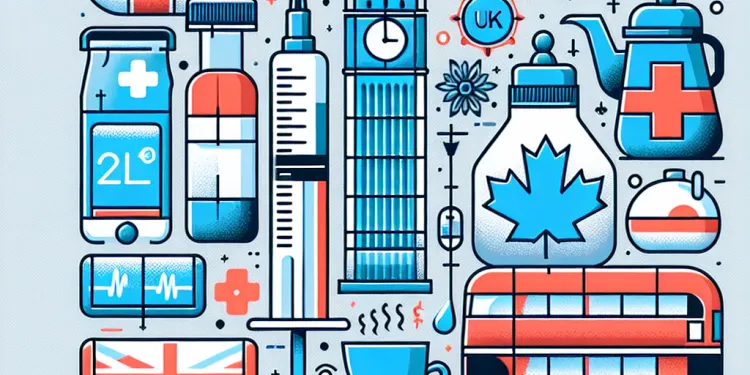
Are GLP-1 medications injectable?
Relevance: 65%
-

What impact does GLP-1 have on glucose metabolism?
Relevance: 65%
-
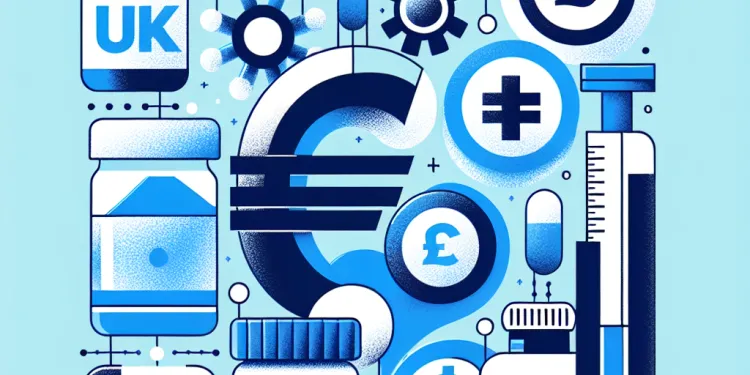
Are there any GLP-1 medications that are taken orally?
Relevance: 65%
-
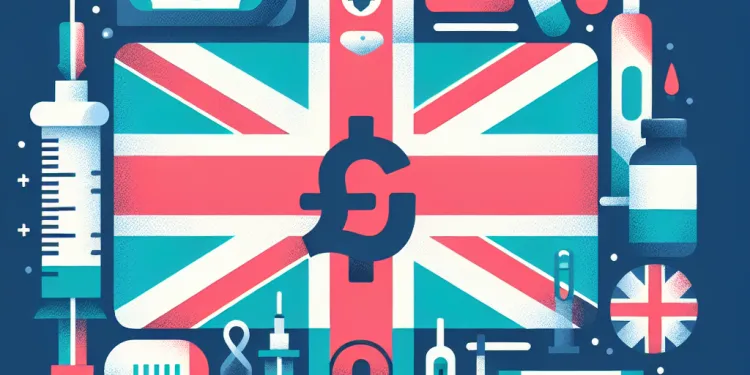
Can GLP-1 be used for type 1 diabetes?
Relevance: 64%
-
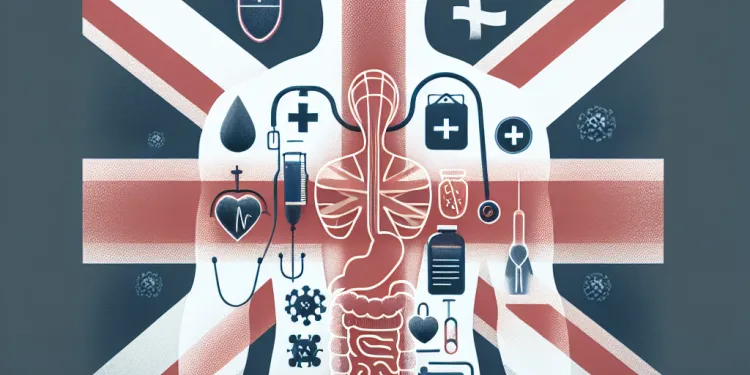
Where is GLP-1 produced in the body?
Relevance: 64%
-

Type 1 Diabetes supporting adults to manage Type 1 diabetes
Relevance: 63%
-
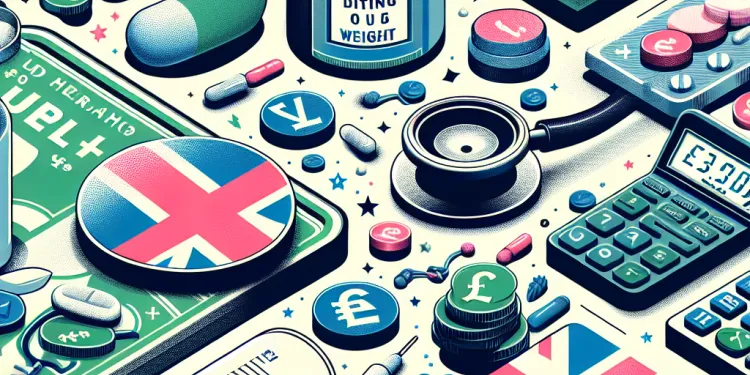
Do GLP-1 medications affect weight?
Relevance: 62%
-

Are there any dietary factors that influence GLP-1 secretion?
Relevance: 61%
-
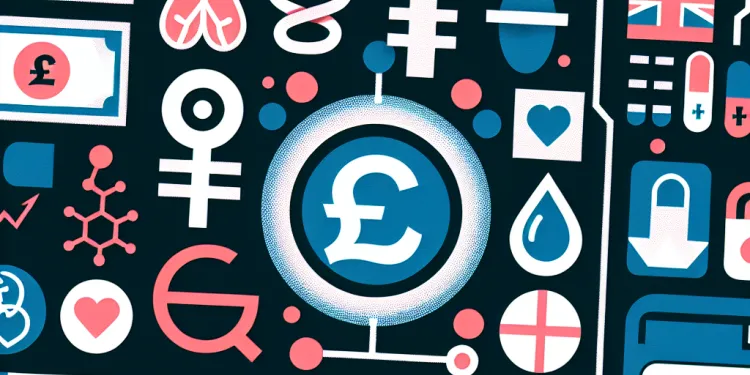
Is GLP-1 related to any other hormones?
Relevance: 60%
-

Can Mounjaro be used in type 1 diabetes?
Relevance: 59%
-
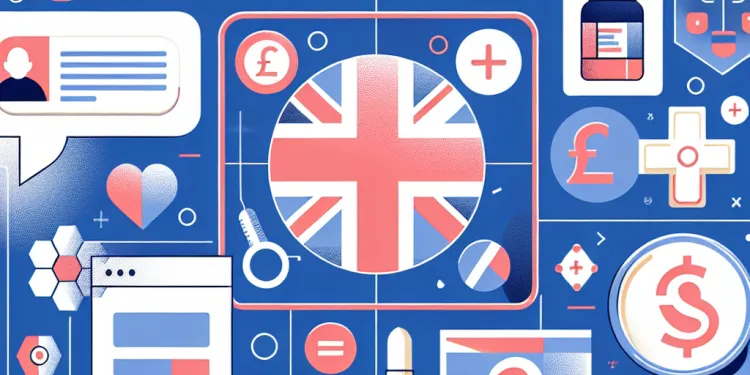
Are there any common side effects of GLP-1 medications?
Relevance: 58%
-

Where can I find support for managing Type 2 Diabetes in the UK?
Relevance: 56%
-

Sarah and Glinys Managing Diabetes into remission Jan2019
Relevance: 56%
-
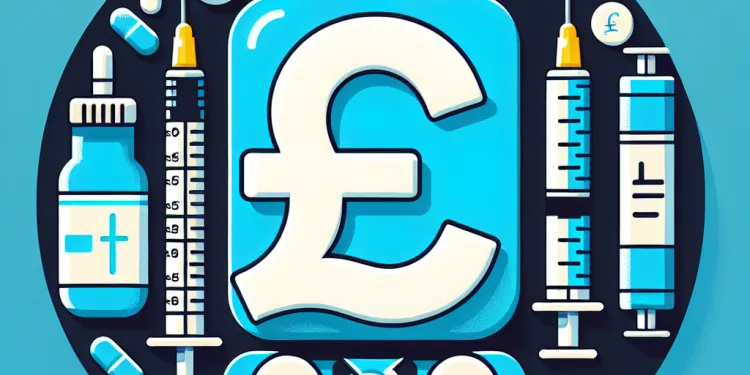
Can I take Ozempic with other diabetes medications?
Relevance: 54%
-

Is Ozempic suitable for type 1 diabetes?
Relevance: 53%
-
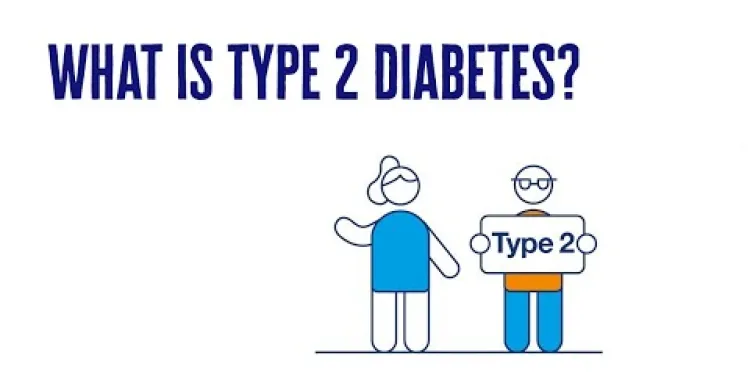
What Is Type 2 Diabetes? | 2 Minute Guide | Diabetes UK
Relevance: 47%
-
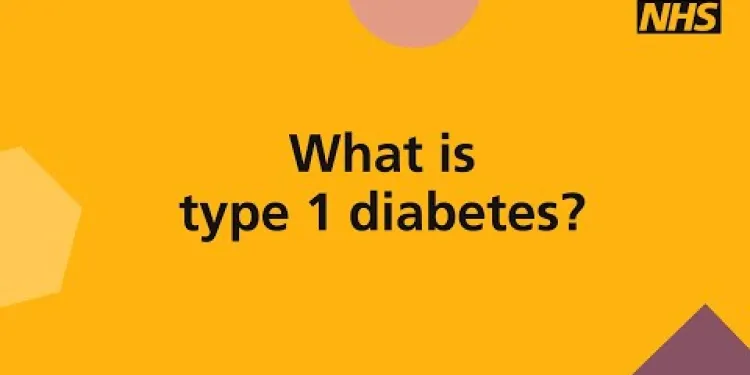
What is type 1 diabetes?
Relevance: 45%
-
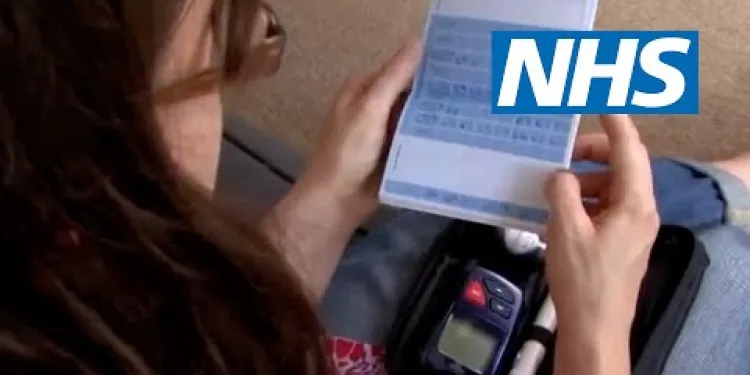
Gestational diabetes | NHS
Relevance: 44%
-
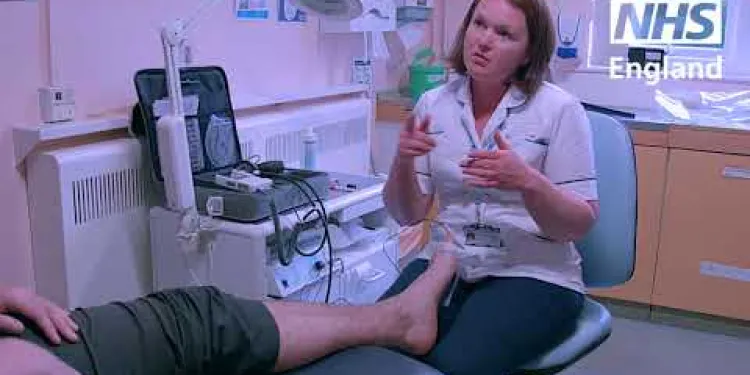
Improving outcomes for people with diabetes
Relevance: 44%
-

Can Type 2 Diabetes go away?
Relevance: 43%
-

How is Type 2 Diabetes treated?
Relevance: 43%
-

Diabetic Foot Conditions Podiatrist
Relevance: 43%
-

Derbyshire Diabetic Eye Screening - Diabetic Eye Screening
Relevance: 43%
-

Gestational Diabetes during pregnancy
Relevance: 42%
-

Diabetes Eye Screening
Relevance: 42%
-

Is Type 2 Diabetes hereditary?
Relevance: 42%
-

Can stress affect my Type 2 Diabetes?
Relevance: 42%
-

Can Type 2 Diabetes be prevented?
Relevance: 42%
Introduction to GLP-1
Glucagon-like peptide-1 (GLP-1) is a hormone that plays a critical role in glucose metabolism and insulin regulation in the body. It is a type of incretin hormone, which is released from the intestine after eating. In recent years, GLP-1 has become a significant focus in the management of type 2 diabetes due to its beneficial effects on blood sugar levels and weight management.
GLP-1 and Insulin Secretion
GLP-1 enhances glucose-dependent insulin secretion, which is crucial for people with type 2 diabetes. After consuming a meal, GLP-1 stimulates the pancreatic beta cells to release insulin, but only when blood glucose levels are high. This glucose-dependent action helps to prevent excessive insulin release, reducing the risk of hypoglycemia.
Inhibition of Glucagon Release
Aside from increasing insulin secretion, GLP-1 suppresses the release of glucagon. Glucagon is another hormone that is responsible for increasing blood glucose levels, particularly during fasting states. By inhibiting glucagon secretion, GLP-1 reduces hepatic glucose production, which is beneficial for lowering overall blood glucose levels in people with type 2 diabetes.
Delaying Gastric Emptying
GLP-1 also slows gastric emptying. This means it reduces the rate at which food leaves the stomach and enters the small intestine. As a result, there is a more gradual absorption of glucose into the bloodstream, preventing postprandial (after meal) spikes in blood sugar. This effect contributes to better overall glycemic control.
Benefits in Weight Management
Another significant role of GLP-1 in diabetes management is its influence on appetite regulation. GLP-1 acts on specific areas of the brain to promote satiety or fullness. This can lead to a reduction in food intake, which is beneficial for weight loss. Since many individuals with type 2 diabetes struggle with obesity, this aspect of GLP-1 can improve both glucose control and cardiovascular health.
GLP-1 Receptor Agonists
Due to these beneficial effects, GLP-1 receptor agonists have been developed as a class of medications for type 2 diabetes management. These drugs mimic the action of natural GLP-1, providing prolonged effects that support better blood sugar control. Examples of GLP-1 receptor agonists include liraglutide, exenatide, and semaglutide, which are increasingly used in the UK and globally.
Conclusions
GLP-1 plays a multifaceted role in the management of type 2 diabetes through its impact on insulin secretion, glucagon inhibition, gastric emptying, and appetite regulation. With the development of GLP-1 receptor agonists, patients have access to treatments that leverage these natural mechanisms in a targeted manner. This innovative approach continues to enhance the quality of diabetes care, offering promising outcomes for patients in the UK and beyond.
Introduction to GLP-1
GLP-1 is a special chemical in your body that helps control blood sugar and how your body uses sugar. It comes from your gut after you eat. Recently, GLP-1 has been important in helping people who have type 2 diabetes. It helps keep blood sugar levels steady and helps with weight management.
GLP-1 and Insulin Release
GLP-1 helps your body make the right amount of insulin, which is very important for people with type 2 diabetes. When you eat, GLP-1 tells your body to make insulin if your blood sugar is high. This means you don’t get too much insulin, which can be dangerous and make your blood sugar drop too low.
Stopping Glucagon
GLP-1 also stops another chemical called glucagon. Glucagon usually raises your blood sugar, like when you haven’t eaten. By stopping glucagon, GLP-1 helps keep your blood sugar from going too high, which is helpful for people with type 2 diabetes.
Slowing Down Digestion
GLP-1 makes your stomach empty food more slowly. This means sugar from food goes into your blood more slowly, which stops big increases in blood sugar after meals. This helps keep your blood sugar levels steady.
Helping with Weight Control
GLP-1 helps you feel full after eating, which can make you eat less and help with weight loss. For people with type 2 diabetes who also have trouble with weight, this is very helpful. Losing weight can help control blood sugar and keep the heart healthy.
GLP-1 Medications
There are medicines called GLP-1 receptor agonists that act like GLP-1 in your body. They help keep blood sugar levels steady. Some examples are liraglutide, exenatide, and semaglutide. These medicines are being used more and more in the UK and around the world.
Conclusions
GLP-1 is important for helping people with type 2 diabetes by helping with insulin, stopping glucagon, slowing digestion, and controlling appetite. New medicines that use GLP-1 are helping people manage their diabetes better. This is giving hope and better health for many people in the UK and beyond.
Frequently Asked Questions
What is GLP-1?
GLP-1 stands for glucagon-like peptide-1, which is a hormone involved in the regulation of blood sugar levels.
How does GLP-1 affect blood sugar levels?
GLP-1 enhances insulin secretion, suppresses glucagon release, and slows gastric emptying, which helps lower blood sugar levels after eating.
What are GLP-1 receptor agonists?
GLP-1 receptor agonists are a class of medications that mimic the action of the GLP-1 hormone to help manage blood sugar levels in people with type 2 diabetes.
How do GLP-1 receptor agonists work?
They bind to GLP-1 receptors in the pancreas, stimulating insulin release and reducing the release of glucagon, which helps lower blood sugar levels.
What are the benefits of using GLP-1 therapies in diabetes management?
GLP-1 therapies can improve blood sugar control, support weight loss, and reduce the risk of cardiovascular events.
Can GLP-1 therapies be used for both type 1 and type 2 diabetes?
GLP-1 therapies are primarily used in the management of type 2 diabetes.
What are some examples of GLP-1 receptor agonists?
Examples include exenatide, liraglutide, dulaglutide, and semaglutide.
Are there side effects associated with GLP-1 therapies?
Yes, common side effects can include nausea, vomiting, diarrhea, and decreased appetite.
Why do GLP-1 therapies promote weight loss?
GLP-1 therapies slow gastric emptying and increase feelings of fullness, which can reduce food intake and promote weight loss.
How are GLP-1 receptor agonists administered?
Most GLP-1 receptor agonists are administered via subcutaneous injection.
Do GLP-1 therapies require blood sugar monitoring?
Yes, regular monitoring of blood sugar levels is still important to ensure optimal diabetes management.
Can GLP-1 therapies be used with other diabetes medications?
Yes, they can be used in conjunction with other diabetes medications, like metformin or insulin, under a doctor's guidance.
What impact do GLP-1 therapies have on cardiovascular health?
Studies have shown that GLP-1 therapies can reduce the risk of major cardiovascular events in people with type 2 diabetes.
Are GLP-1 therapies suitable for everyone with type 2 diabetes?
Not all patients are suitable for GLP-1 therapies. A healthcare provider can determine if it is an appropriate treatment option.
What is the role of lifestyle changes with GLP-1 therapies?
Lifestyle changes, such as diet and exercise, remain an essential part of diabetes management, even when using GLP-1 therapies.
Do GLP-1 therapies have any effect on beta cells in the pancreas?
GLP-1 can have positive effects on beta-cell function, potentially improving long-term insulin secretion.
How often are GLP-1 receptor agonists administered?
Frequency of administration varies by medication. Some are daily, while others are weekly.
Can GLP-1 therapies be stopped suddenly?
Stopping GLP-1 therapies should be done under medical supervision, as it may cause changes in blood sugar levels.
Is nausea from GLP-1 therapies permanent?
Nausea is usually temporary and may lessen over time as the body adjusts to the medication.
Are there any dietary restrictions while on GLP-1 therapies?
There's no specific diet required, but maintaining a balanced diet is beneficial for optimal diabetes management.
What is GLP-1?
GLP-1 is a thing in your body.
It helps control how much sugar is in your blood.
If you want to learn more, you can:
- Ask a doctor
- Look at a picture book about the body
- Watch a video for kids about how the body works
GLP-1 is a short name for a hormone called glucagon-like peptide-1. This hormone helps control how much sugar is in your blood.
How does GLP-1 change blood sugar levels?
GLP-1 is something in your body that helps control sugar levels in your blood.
When you eat food, GLP-1 tells your body to make insulin. Insulin helps to lower your blood sugar.
If you have high blood sugar, GLP-1 helps bring it down.
If you want to learn more about this, you can talk to a doctor or use apps that explain health in simple words.
GLP-1 helps the body in three ways:
1. It helps the body make more insulin.
2. It stops the body from making too much glucagon.
3. It makes sure food moves slowly from the stomach.
All these things help to keep blood sugar low after eating.
What are GLP-1 receptor agonists?
GLP-1 receptor agonists are medicines. They help you make more insulin. Insulin helps control sugar in your blood.
These medicines are often used by people with diabetes. Diabetes is when your body has trouble with sugar.
If you take these medicines, a doctor will help you. They will talk to you about how to use them.
You can use tools to remind you when to take your medicine. Some people use phone alarms or charts.
GLP-1 receptor agonists are a type of medicine. They work like the GLP-1 hormone in our body. This helps people with type 2 diabetes keep their blood sugar at the right level.
How do GLP-1 receptor agonists work?
GLP-1 receptor agonists are medicines. They help your body use sugar better. They tell your body to make more insulin after you eat. Insulin is a chemical that lowers sugar in your blood.
These medicines also help you feel full, so you eat less. This can help with losing weight.
If reading is hard, you can use tools to help. Try using audiobooks or apps that read text aloud. Having pictures with the text can also make it easier to understand.
These work by sticking to special places in the pancreas called GLP-1 receptors. This makes the pancreas send out more insulin and less glucagon. Both help to lower blood sugar.
How can GLP-1 help people with diabetes?
GLP-1 medicines can help keep blood sugar levels healthy. They can also help you lose weight and keep your heart healthy.
Can GLP-1 Medicines Help with Type 1 and Type 2 Diabetes?
GLP-1 medicines can help people with type 2 diabetes. They are not used for type 1 diabetes. Please talk to a doctor or nurse for more information.
If you need more help with reading, try using audio books or ask someone to read with you.
GLP-1 therapies help people with type 2 diabetes. They are special medicines for this illness.
What are some examples of GLP-1 receptor agonists?
GLP-1 receptor agonists are medicines. They help with diabetes.
Here are some examples of these medicines:
- Exenatide (Byetta)
- Liraglutide (Victoza)
- Dulaglutide (Trulicity)
- Semaglutide (Ozempic)
If you need help understanding this, you can:
- Ask someone you trust to explain it.
- Look at pictures or videos about these medicines.
- Talk to a doctor or nurse for more help.
Here are some examples: exenatide, liraglutide, dulaglutide, and semaglutide.
Do GLP-1 medicines have side effects?
GLP-1 medicines might cause some side effects. Side effects are changes that can happen in your body when you take medicine.
Some people may feel sick, have stomach pain, or get a headache. It's important to tell your doctor if you feel unwell.
Talking to a doctor or nurse can help you understand these side effects. They can tell you how to feel better.
Using pictures or videos can also help explain side effects. Ask for these tools if they help you understand better.
Yes, there are some common side effects. These can be feeling sick, throwing up, having runny poo, and not feeling hungry.
Why do GLP-1 treatments help you lose weight?
GLP-1 treatments can help people lose weight.
Here is how they work:
- They help control hunger, so you feel less hungry.
- They make your stomach feel full more quickly, so you eat less.
- They help the body use sugars better, which can stop cravings for food.
If you need help reading, you can ask someone you trust to go over the information with you. You may also find it useful to use text-to-speech tools to read the content out loud.
GLP-1 medicines help your stomach empty food more slowly. They make you feel fuller for longer. This can help you eat less and lose weight.
How do you take GLP-1 receptor agonists?
Most GLP-1 receptor agonists are given with a shot under the skin.
Do I need to check my blood sugar with GLP-1 medicine?
Yes, checking your blood sugar regularly is important. It helps you take care of your diabetes better.
Can you take GLP-1 medicines with other diabetes medicines?
If you have diabetes, you might take medicine to help. GLP-1 is a type of medicine for diabetes. You might wonder if you can take it with other diabetes drugs.
Yes, you can usually take GLP-1 with other diabetes medicines. But, you should always talk to your doctor before you make any changes. They will help you find the best plan for you.
If you find it hard to understand this, you can:
- Ask someone you trust to explain it.
- Use pictures to help you remember.
- Write down questions to ask your doctor.
Yes, you can use them with other diabetes medicines, like metformin or insulin. But you should only do this if a doctor says it is okay.
Tips: - Ask your doctor if you are not sure. - Use a notebook to keep track of your medicines. - Set reminders to help you take your medicine on time.How do GLP-1 medicines help your heart?
GLP-1 medicines can be good for your heart. These medicines help people with diabetes. They can lower your chance of heart problems.
If you want to learn more, you can:
- Ask your doctor. They can explain how these medicines work.
- Look for videos or pictures. These can help you understand.
- Use apps that read text out loud. They can help you understand the information better.
Research shows that some medicines, called GLP-1 therapies, can help people with type 2 diabetes. These medicines lower the chance of big heart problems.
Can everyone with type 2 diabetes use GLP-1 medicine?
Not everyone with type 2 diabetes can use GLP-1 medicine. It's important to talk to your doctor to see if it's right for you.
Your doctor can help you understand if this medicine will help you and how to use it safely.
If you're unsure, ask someone to help you read or talk about this information.
Not everyone can use GLP-1 medicines. A doctor or nurse can tell you if it's right for you.
How do lifestyle changes help with GLP-1 treatments?
GLP-1 treatments are medicines that can help with health problems. Making changes in how you live can help these medicines work even better. Here are some simple tips:
- Eat healthy food like fruits and vegetables.
- Exercise regularly—like walking, running, or playing sports.
- Sleep enough at night to feel rested.
- Stay relaxed and do things that make you happy.
It's good to ask for help from doctors or nurses to know the right way to make these changes. You can also use apps or tools to track your food and exercise. They can remind you to keep on track and help you feel good.
It is important to make changes to your life if you have diabetes. Eating healthy food and exercising are important. You should do this even if you take special diabetes medicine called GLP-1 therapies.
Here are some things that might help:
- Try to eat more fruits and vegetables.
- Try to play or exercise every day.
- Talk to a doctor if you need help.
- Use a calendar to mark what exercises you do each day.
- Ask family or friends to help you stay healthy.
Can GLP-1 medicines help the beta cells in the pancreas?
GLP-1 medicines are a type of medicine. We want to know if they can help the beta cells in the pancreas.
Beta cells are important because they help control sugar in the blood.
If you need help reading this, you can try using a tool that reads the words out loud. You can also ask someone to help explain it to you.
GLP-1 can help the body make insulin better for a long time. This is good for health.
How often do you take GLP-1 receptor agonists?
GLP-1 receptor agonists are medicines. They help people with some illnesses. You may need to take them once a day or once a week.
Ask your doctor when to take them. Use an alarm or reminder to help you remember. A calendar can also help you keep track.
How often you take medicine depends on the medicine. Some you take every day, others you take once a week.
Can you stop taking GLP-1 medicines all at once?
Talk to your doctor before stopping GLP-1 therapies. It can change your blood sugar levels.
Here are some tips to help:
- Ask your doctor for advice.
- Check your blood sugar levels often.
- Use reminders or alarms to help keep track.
- Talk to a friend or family member if you need support.
Does GLP-1 medicine always make your tummy feel sick?
Feeling sick usually doesn't last long. It might get better over time as your body gets used to the medicine.
Do I need to avoid any foods while using GLP-1 medicine?
You don't have to eat certain foods, but eating healthy foods can help manage diabetes better.
Useful Links
- Ergsy carfully checks the information in the videos we provide here.
- Videos shown by Youtube after a video has completed, have NOT been reviewed by ERGSY.
- To view, click the arrow in centre of video.
- Most of the videos you find here will have subtitles and/or closed captions available.
- You may need to turn these on, and choose your preferred language.
- Go to the video you'd like to watch.
- If closed captions (CC) are available, settings will be visible on the bottom right of the video player.
- To turn on Captions, click settings .
- To turn off Captions, click settings again.
More Items From Ergsy search
-

What role does GLP-1 play in diabetes management?
Relevance: 100%
-

What is GLP-1?
Relevance: 75%
-

Is GLP-1 naturally occurring?
Relevance: 72%
-

Can GLP-1 be used as a medication?
Relevance: 70%
-

What is the half-life of GLP-1?
Relevance: 69%
-

Is Wegovy used for type 2 diabetes management?
Relevance: 69%
-

Can GLP-1 levels be measured?
Relevance: 68%
-

What does GLP-1 stand for?
Relevance: 68%
-

What is the connection between GLP-1 and insulin?
Relevance: 68%
-

How does GLP-1 affect appetite?
Relevance: 67%
-

How to manage type 2 diabetes
Relevance: 67%
-

How do GLP-1 receptor agonists work?
Relevance: 66%
-

Are GLP-1 medications injectable?
Relevance: 65%
-

What impact does GLP-1 have on glucose metabolism?
Relevance: 65%
-

Are there any GLP-1 medications that are taken orally?
Relevance: 65%
-

Can GLP-1 be used for type 1 diabetes?
Relevance: 64%
-

Where is GLP-1 produced in the body?
Relevance: 64%
-

Type 1 Diabetes supporting adults to manage Type 1 diabetes
Relevance: 63%
-

Do GLP-1 medications affect weight?
Relevance: 62%
-

Are there any dietary factors that influence GLP-1 secretion?
Relevance: 61%
-

Is GLP-1 related to any other hormones?
Relevance: 60%
-

Can Mounjaro be used in type 1 diabetes?
Relevance: 59%
-

Are there any common side effects of GLP-1 medications?
Relevance: 58%
-

Where can I find support for managing Type 2 Diabetes in the UK?
Relevance: 56%
-

Sarah and Glinys Managing Diabetes into remission Jan2019
Relevance: 56%
-

Can I take Ozempic with other diabetes medications?
Relevance: 54%
-

Is Ozempic suitable for type 1 diabetes?
Relevance: 53%
-

What Is Type 2 Diabetes? | 2 Minute Guide | Diabetes UK
Relevance: 47%
-

What is type 1 diabetes?
Relevance: 45%
-

Gestational diabetes | NHS
Relevance: 44%
-

Improving outcomes for people with diabetes
Relevance: 44%
-

Can Type 2 Diabetes go away?
Relevance: 43%
-

How is Type 2 Diabetes treated?
Relevance: 43%
-

Diabetic Foot Conditions Podiatrist
Relevance: 43%
-

Derbyshire Diabetic Eye Screening - Diabetic Eye Screening
Relevance: 43%
-

Gestational Diabetes during pregnancy
Relevance: 42%
-

Diabetes Eye Screening
Relevance: 42%
-

Is Type 2 Diabetes hereditary?
Relevance: 42%
-

Can stress affect my Type 2 Diabetes?
Relevance: 42%
-

Can Type 2 Diabetes be prevented?
Relevance: 42%


